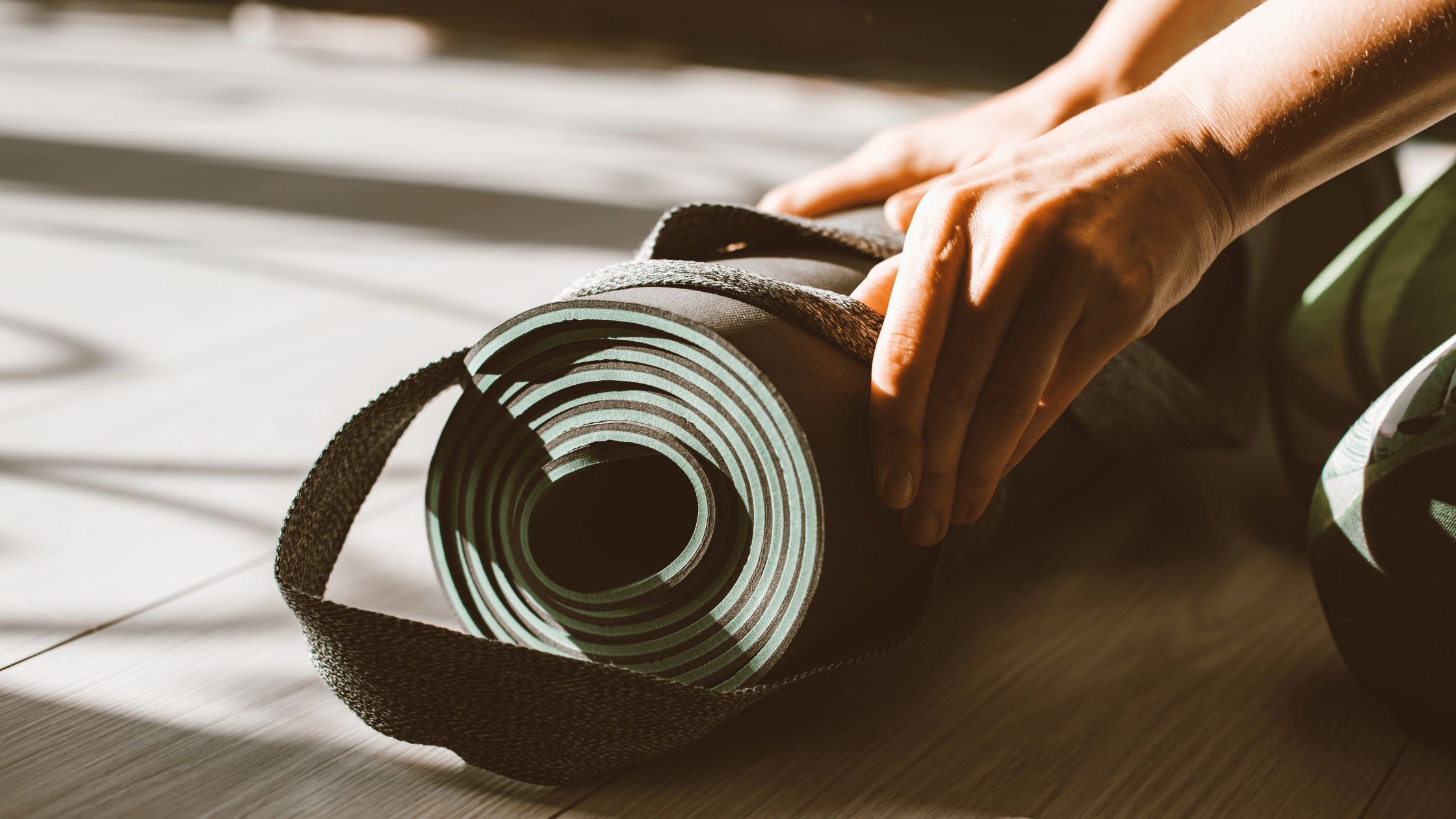A long day on the job site is hard on the body and can leave you feeling physically and mentally exhausted. Integrating a pre-bed nighttime yoga sequence into your bedtime routine can help calm the body and mind and support better sleep. It focuses on poses that promote relaxation, stress relief, and mindfulness to help you sleep better and feel more rested the next day. Poses like butterfly, cat-cow, and corpse pose can help your mind and body decompress and help you easily drift off into la-la land.
The ultimate yoga sequence for mind and body rest and rejuvenation
1. Balasana (child’s pose)
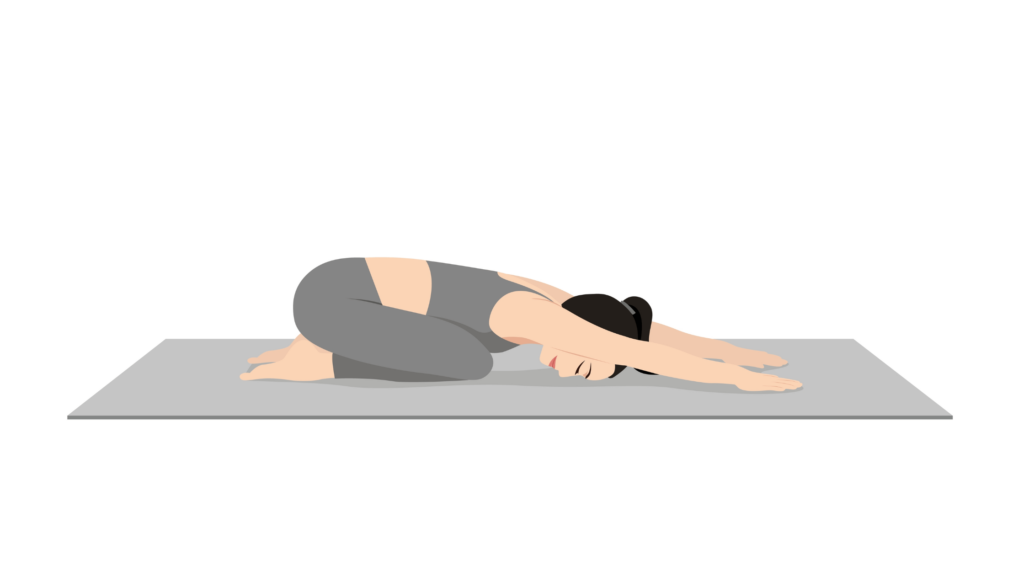
How it supports sleep: This pose is a staple for grounding and relaxation. It calms your mind and helps release tension in your back and hips. It encourages you to focus inward, preparing you to wind down before bed.
How to do it: Start on all fours, move your toes together, and open your knees hip-width apart or wider. Exhale deeply and lower your torso between your knees while reaching forward. Extend your arms, either palms facing down or lower them to your sides with palms up. Rest your forehead on the mat and hold for 1-5 minutes.
2. Marjaiasana-bitilasana (cat-cow pose)
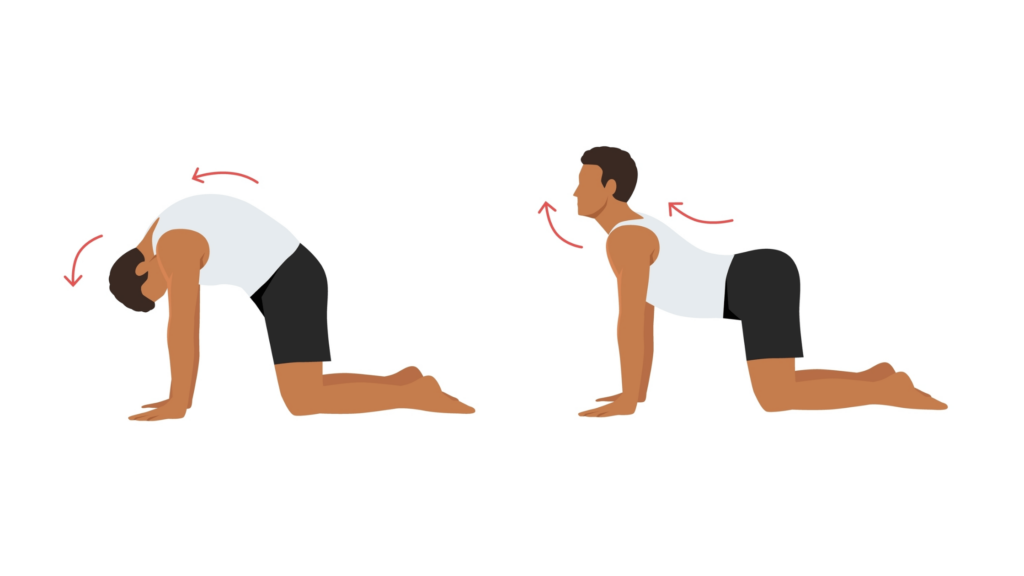
How it supports sleep: This pose flows rhythmically between two positions to produce abdominal activation and spinal flexibility. These actions, especially when combined with steady breathing, can be relaxing and meditative before bed. Plus, it’s a great way to help release tension in the spine and back.
How to do it: Start on your hands and knees on your yoga mat, with your hands below your shoulders and knees below your hips. Inhale into the “cow” pose, lifting your tailbone and head toward the ceiling while lowering your belly to the ground. Exhale into the cat pose, rounding the spine and tucking your tailbone and head. Repeat 6-10 times, following the rhythm of your breath.
3. Baddha konasana (butterfly pose)
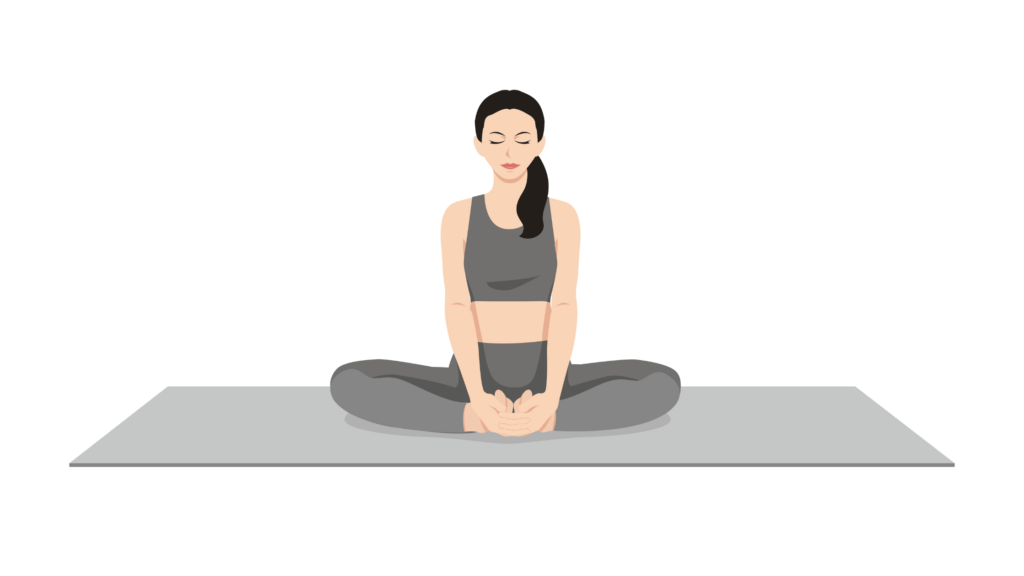
How it supports sleep: This pose is excellent for stretching and releasing tight thighs and hips and promoting relaxation. It releases tension from your lower back and body, preparing you for a great sleep.
How to do it: Sit in the center of your mat with your legs extended out in front of you. Bend your knees and bring your heels toward you, letting the bottoms of your feet touch each other. Let your knees relax and fall open, and keep your spine straight as you hold the outer edges of your feet. Breathe deeply and hold the pose for 1-5 minutes.
4. Ananda balasana (happy baby pose)

How it supports sleep: This pose releases lower back tension and encourages spine alignment. It gently opens the hips and groin, promoting relaxation and decompression.
How to do it: First, lie on your back and bring your knees to your chest. Grab hold of your feet or your ankles from the outside of your leg, and gently pull your knees toward either side of your torso. Hold for a minute or two, and explore rocking from side to side. If you’re struggling to reach your feed or need more support, consider using a yoga strap or resistance band around the bottoms of your feet and holding onto each strap, adjusting the stretch to your level of comfortability.
5. Prasarita padottanasana (wide-leg forward bend)
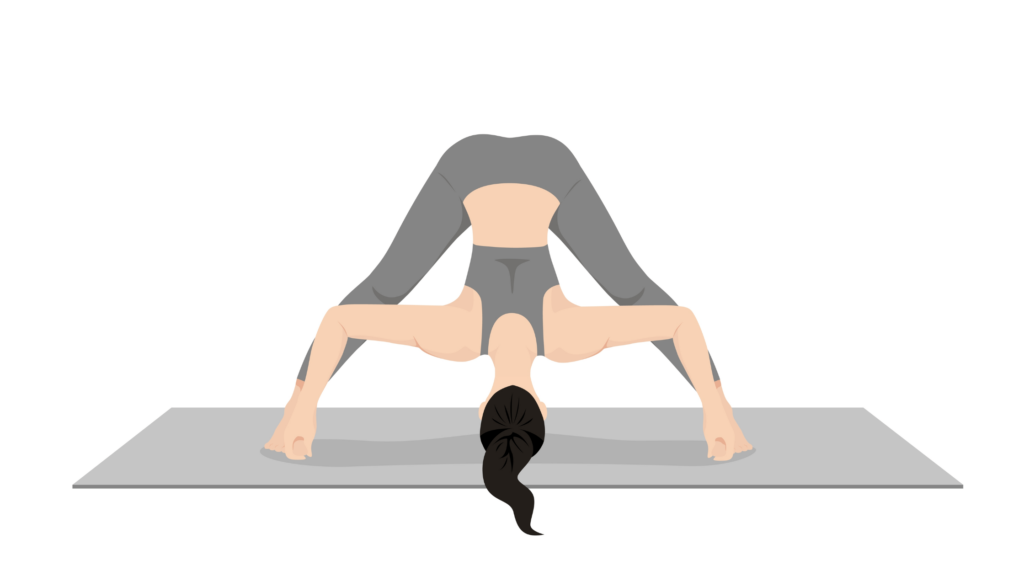
How it supports sleep: This pose helps release tension from the entire body—shoulders, back, hips, glutes, and hamstrings. Hanging your head between your legs gives you a feeling of centering and thorough decompression before heading off to sleep.
How to do it: Step your feet wider than hip-width and turn your toes to point forward or slightly inward. Stand tall, lift your chest, inhale, and then exhale while you slowly hinge forward from the hips. Rest your fingertips on the floor or block or hold opposite elbows, and let your head hang heavy as you relax. Breathe deeply. For a deeper stretch and shoulder release, interlace your fingers behind your back and raise your straight arms toward the back of your head. Breathe deeply and hold for 1-3 minutes.
6. Savasana (corpse pose)
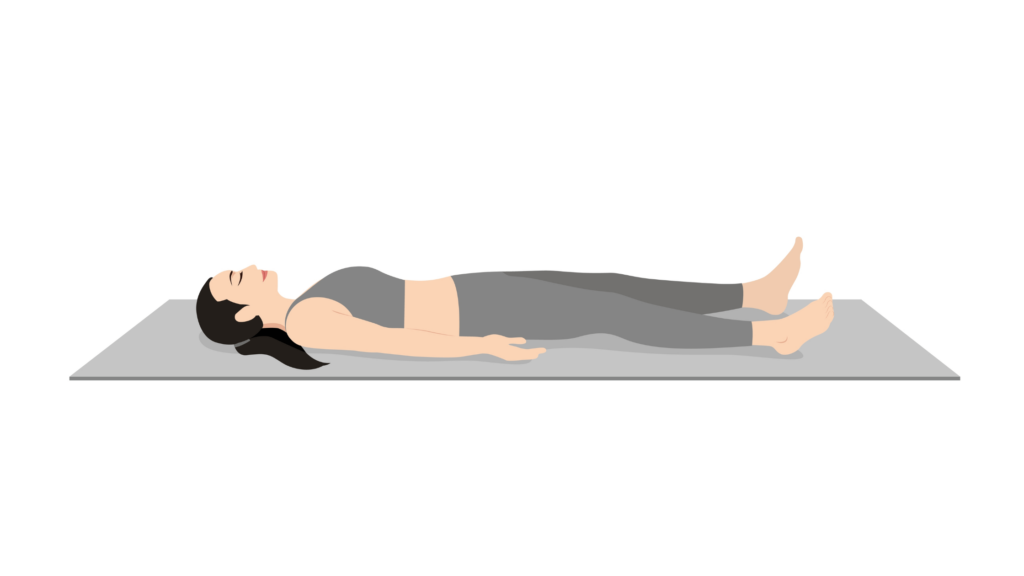
How it supports sleep: This pose resembles a sleep position and encourages zero active movements and solely mental decompression. It’s about relaxation and letting yourself go to the post-practice meditation.
How to do it: Lie on your mat on your back, with your feet slightly wider than hip-width. Rest your arms at your sides, with palms facing up, or stack your hands on your belly and let your elbows drop to your sides. Take deep inhales and exhales, and let your body weight sink. Stay still, focusing on the rhythm of your breathing. Hold this pose for 4 minutes or longer.
Yoga and sleep
The link between yoga and quality sleep isn’t coincidental—it’s backed by research. A 2013 study of yoga practices and sleep quality for the elderly found that those who participated in yoga had a lower (better) score on the Pittsburgh Sleep Quality Index (PSQI) and a higher Quality Of Life (QOL) score.
Yoga promotes mindfulness, encourages melatonin production, and reduces nighttime sleep disturbances, all of which support deeper and more restful sleep. Exercise is good for overall sleep hygiene, and deep breathing techniques taught in yoga can also help induce sleep.
Other perks of a regular yoga practice
Yoga has traditionally been more of a woman’s practice, but it’s becoming increasingly popular among men due to the abundance of health benefits. Aside from improving sleep quality, here are some additional benefits of yoga.
1. Stress relief
Yoga has long been effective in reducing stress. Deep breathing helps activate the parasympathetic nervous system and can serve as a complementary remedy for stress, anxiety, and depression. Yoga is also highly effective for lowering cortisol levels and calming the nervous system; cortisol has an inverse relationship with melatonin, so high cortisol will prevent melatonin levels from rising to support sleep. Long-time yoga practitioners feel a boosted mood and an improved sense of well-being.
2. Supports mental health
The American Osteopathic Association states that yoga creates mental clarity and calmness and relieves chronic stress patterns, helping to sharpen concentration and relax the mind.
Harvard Medical School also suggests that regular yoga practices could counteract age-related declines in cognitive skills like memory. Yoga also increases mood by elevating gamma-aminobutyric acid (GABA) levels, which are associated with decreased anxiety.
3. Increases strength
From the outside, you may think yoga is solely about chanting and stretching, but it can also help you gain immense full-body strength. Certain types of yoga, like power yoga, vinyasa yoga, ashtanga, and Iyengar yoga, involve holding more difficult postures for extended periods, which can help you increase your bodyweight strength over time.
4. Boosts immunity
Studies suggest consistently practicing yoga positively affects your immune system by downregulating pro-inflammatory markers and reducing inflammation. It could be a complementary medicine for those at risk or diagnosed with an inflammatory disease.
Yoga also boosts immunity by reducing stress, increasing respiratory health through deep breathing, and stimulating the lymphatic system.
5. Improves flexibility and balance
Much like building strength, certain types of yoga are also well-suited for improving flexibility and balance. Yin, Hatha, and Vinyasa yoga focus on stretching connective tissue and muscles and involve various standing poses for participants to work on balance.
Bottom line
Getting adequate sleep is crucial to proper function and safety on and off the job. Good energy levels and mental focus are non-negotiable when you work in fields like architecture, engineering, or construction. Adding a yoga sequence to your nighttime routine that includes poses like child’s pose, happy baby, and wide-legged forward bend can help you decompress, de-stress, and get a better night’s sleep, in addition to supporting immunity and boosting mental health.
Like this and want more? Subscribe to our newsletter for more tips on health, fitness, and wellness for construction professionals.
